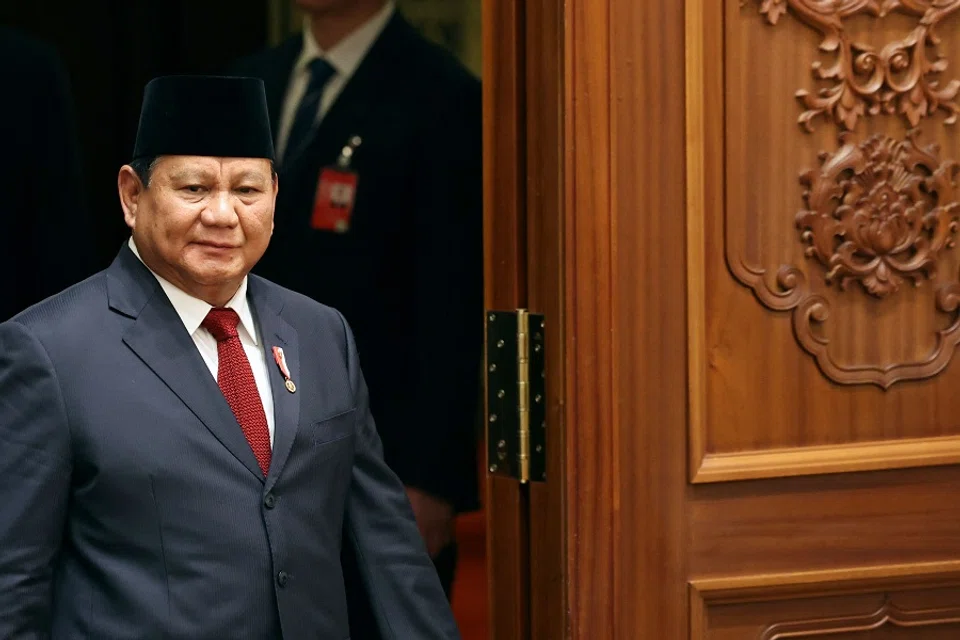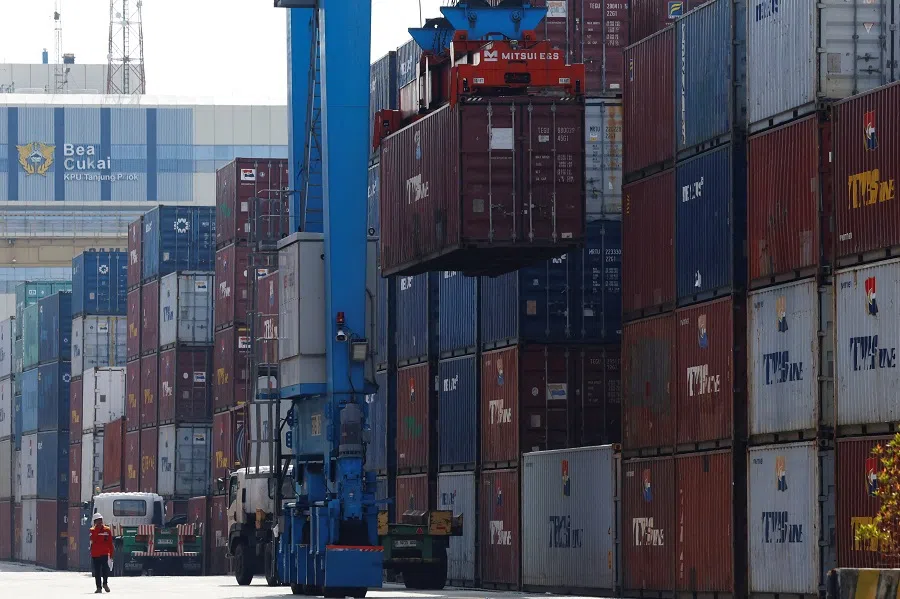US tariffs: Challenges and opportunities for China-Indonesia trade and investment
The tariffs imposed by US President Donald Trump on Indonesia presents unexpected opportunities that Indonesia should take advantage of, says Indonesian researcher Muhammad Zulfikar Rakhmat.

Indonesia is facing significant economic challenges after the US imposed a 32% tariff on Indonesian exports. This tariff, designed to protect US domestic industries, threatens to undermine Indonesia’s trade prospects with the US and could have far-reaching consequences for Indonesia’s relationship with China.
As global supply chains become increasingly intertwined and US-China tensions continue to escalate, the ripple effects of this tariff are being felt in the Indo-Pacific, especially within Indonesia’s growing economic partnership with China. (NB: On 9 April, President Trump announced a 90-day reprieve on most of his “reciprocal tariffs” except China.)
The 32% tariff on Indonesian exports is not just an economic blow for Indonesia, but also a potential turning point in how the country aligns itself within the broader geopolitical landscape. While the tariff primarily impacts sectors like automotive, textiles, and electronics, its true significance lies in its broader effects on Indonesia’s trade relations, especially with China. The ongoing US-China trade war is encouraging countries like Indonesia to reconsider their dependency on the US as a key trading partner and turn toward alternative markets.
This shift presents an opportunity for Indonesia to deepen its economic ties with China and enhance cooperation on key projects such as the Belt and Road Initiative (BRI), which aims to boost infrastructure development in Asia.
China, with its vast market, growing industrial base, and close proximity to Indonesia, stands to benefit from these shifts. Indonesia’s large domestic market, coupled with its abundant natural resources, makes it an increasingly attractive destination for Chinese investments, particularly in manufacturing and infrastructure. This shift presents an opportunity for Indonesia to deepen its economic ties with China and enhance cooperation on key projects such as the Belt and Road Initiative (BRI), which aims to boost infrastructure development in Asia.
China-Indonesia trade dynamics: opportunities amid challenges
As the US imposes tariffs, China may find itself in a position to redirect goods that were once bound for the US into markets like Indonesia. This creates an opportunity for Indonesian businesses to benefit from lower-priced Chinese goods, which could lower production costs and increase competitiveness in certain sectors. However, it also means that Indonesia’s local industries could face tougher competition from cheaper Chinese imports, especially in sectors like electronics, textiles, and automotive parts.
More positively, China’s growing investment in Indonesia, particularly in key sectors such as manufacturing, could see a significant boost. As companies shift production out of China to avoid US tariffs, Indonesia could become a prime location for factories looking to relocate. The scale of potential Chinese investment is substantial, and Indonesia stands to gain from both financial capital and advanced manufacturing technologies, potentially accelerating its economic development and integration into the regional supply chain.

However, the reality so far has been mixed — many Chinese projects in Indonesia have fallen short on delivering technology transfer or significant local job creation, as Chinese firms often prefer to bring in their own workers. To fully realise the benefits, Indonesia must ensure that future investments contribute meaningfully to local capacity building and long-term economic resilience.
Challenges for Indonesian exports to China
While there are clear opportunities for increased Chinese investment in Indonesia, the situation is not without risks. The tariff-induced slowdown in global trade, particularly in the US and China, could lead to reduced demand for Indonesian exports in key sectors like automotive, electronics, and agriculture. Sectors closely linked to China’s supply chain, such as electronics and automotive components, may experience disruptions as production bottlenecks and shifting market demands emerge.
The Chinese economy, which is already experiencing the impacts of US tariffs and domestic economic challenges, may struggle to absorb the same volume of goods from Indonesia as it has in the past.
Additionally, as China deals with its own economic slowdown, Indonesia’s exports to China could suffer. The Chinese economy, which is already experiencing the impacts of US tariffs and domestic economic challenges, may struggle to absorb the same volume of goods from Indonesia as it has in the past. This could exacerbate Indonesia’s economic vulnerabilities, particularly in industries that rely heavily on Chinese demand.
China’s own response to US tariffs — announcing a 34% then 84% retaliatory tariffs on US goods and tightening export controls on key raw materials — further complicates the global trade environment. While these retaliatory measures primarily target US economic interests, they may unintentionally accelerate Southeast Asia’s importance in Beijing’s trade recalibration.
For Indonesia, this could translate into increased export opportunities. As US products become more expensive in the Chinese market, Chinese buyers may turn to Indonesian alternatives, particularly in agriculture, food processing, and basic manufacturing. Indonesia could fill part of the void left by restricted American imports, offering an opening to expand its presence in Chinese supply chains.
Diversification and mutual benefit crucial to successful trade partnerships
In the face of these economic headwinds, it is becoming increasingly clear that Indonesia must work to diversify its export markets. Strengthening trade ties with China is an essential part of this strategy, but it must not come at the expense of other global relationships. By enhancing cooperation on trade, investment, and technology transfer, Indonesia and China could build a more resilient economic partnership that mitigates the risks posed by US tariffs.
By strategically aligning with China’s global infrastructure goals, Indonesia could see significant improvements in its transportation, energy, and technology sectors, laying the groundwork for a more competitive economy.
There is also a strategic imperative for Indonesia to leverage its position within the ASEAN framework to strengthen ties with China. As both countries seek to counterbalance the economic weight of the US, closer cooperation could help both nations avoid being overly reliant on any single global market. Indonesia could also benefit from further engagement in regional agreements, such as the Regional Comprehensive Economic Partnership (RCEP), which provides an opportunity to solidify its trade relations within Asia and beyond.

Moreover, Indonesia’s engagement with China could go beyond mere trade. The continued development of infrastructure under the BRI offers potential for long-term economic growth, particularly in Indonesia’s underserved regions. By strategically aligning with China’s global infrastructure goals, Indonesia could see significant improvements in its transportation, energy, and technology sectors, laying the groundwork for a more competitive economy.
Success hinges on infrastructure and environment
To fully capitalise on its relationship with China, Indonesia must address several critical challenges. First, the country must focus on enhancing the competitiveness of its local industries. With cheaper Chinese imports likely to flood the market, Indonesian businesses must find ways to innovate, improve product quality, and reduce production costs to remain competitive. This will require a combination of investment in technology, skills development and regulatory reforms.
Additionally, Indonesia needs to improve its infrastructure to accommodate the influx of investment and ensure that its supply chains are capable of handling increased production and trade. Investment in energy, transportation and digital infrastructure is critical to ensuring that Indonesia can meet the demands of an increasingly complex global trade environment.
On the financial side, Indonesia’s government must work to stabilise the rupiah and manage the potential risks posed by capital outflows. By pursuing sound monetary and fiscal policies, such as interest rate cuts and targeted fiscal incentives for sectors impacted by tariffs, Indonesia can mitigate the negative effects of trade disruptions and continue to attract investment.
The US tariffs have undoubtedly dealt Indonesia a tough hand, but they also present an inflection point.
Looking forward: a strategic partnership for the future
The US tariffs have undoubtedly dealt Indonesia a tough hand, but they also present an inflection point. As global trade realigns around US-China competition, Indonesia has an opportunity to strengthen its partnership with China — not as an act of dependence, but as part of a broader strategy to enhance trade resilience, attract investment, and elevate its role in the Indo-Pacific.
But to turn this opportunity into long-term gain, Indonesia must do its homework. The country must ensure that its relationship with China remains mutually beneficial, that incoming investments meet quality standards, and that its economy does not become overly reliant on any single partner. This means setting clear terms for foreign investment, prioritising technology transfer and local capacity building, and maintaining a diversified portfolio of economic relationships.





